Silencer Saturday #402: Suppressor Impact On Machine Gun Rate Of Fire

Good afternoon, everyone, and welcome back to TFB’s Silencer Saturday, brought to you by Yankee Hill Machine, manufacturers of the new YHM R45 Multi-Host Suppressor. This week we are testing backpressure effects on rate of fire. And thanks to the unique design of the BOE Mod 1 silencer we can compare performance with and without forward gas venting on the same can.
Silencer Saturday @ TFB:
- Silencer Saturday #401: RXD Suppressors Hands-On: What Ruger Got Right
- Silencer Saturday #400: Silencer Shop Foundation
- Silencer Saturday #399: Dead Air's RXD Line - First Look at the Ruger Collaboration
- Silencer Saturday #398: Brownells BRN-180 Gen 3
- Silencer Saturday #397: Silencer Sales Promo Roundup
- Silencer Saturday #396: New Suppressor In Time For Hunting Season?
The Idea
Semi- and full-auto firearms harness the energy of a bullet firing to operate the gun, ejecting the fired case and loading a fresh round into the action. Whether the specific gun uses the gas pressure or recoil (including inertia-operated shotguns) of the shot, the gun must balance those forces with the weight of the operating parts and energy created by the cartridge being used. Too hard or too weak, and bad things can happen.
Adding silencers to firearms upsets that balance. SIlencers operate like a car muffler in that they provide a space where the gases produced by combustion can expand and cool in a confined space. But trapping that gas often leads to “backpressure” buildup, explained in an oversimplified way as the buildup of combustion gas inside the silencer pushing back down the barrel (or other operating parts like a gas tube or piston), placing more force onto the bolt. This can lead to the gun getting dirtier and hotter, and cycling the bolt faster and/or harder than it would operate without a silencer.
Backpressure reduction is one of the main trends in current silencer design. It seems like everyone is adding additional vents to existing designs or coming up with interesting ways to trap the gas without forcing it back into the action. Methods like Purposely Induced Porosity as seen in PTR silencers or the Flow-Through design used by HuxWrx silencers are evolutions from the regular “tube with baffles in it” designs dating back to Hiram Maxim himself.
The BOE Mod 1 silencer has an interesting design for this kind of test. Rather than being fully committed to being a vented design, the Mod 1 had two interchangeable front caps. One has vents, and one does not. BOE sent me three models of this silencer to use and review, one being this full-size Mod 1 with a .36-caliber core and end caps. My original intent was running this one on a .35 Whelen review that still has not happened, but this bore diameter is common because it works with 9mm guns, too.
By switching end caps on the same silencer I could see if there was a difference or not to the rate of fire on an Uzi. Rather than switching between silencers of similar size but different internal design, this would only involve changing that front cap. It has been my subjective impression that the vented cap kept cyclic rates more similar to unsuppressed firing, but was that really true? Let’s find out.
The Test
The BOE Mod 1 looks a little futuristic on a 1950s subgun like an Uzi, but this gun also has a red dot mounted on a StormWerkz top cover mount so it is not the only modern upgrade. This is a larger silencer than I typically use on this gun. Most of the time, it has a 3-lug mount and SilencerCo Omega 9k attached. I did not have a 3-lug mount with HUB threads so I removed the 3-lug muzzle device and used a direct-thread 1/2x28 fitting on the muzzle threads.
As we all learned in elementary school science class, any experiment needs to eliminate variables. The test should use one ammo type, from the same lot, one magazine, and one shooter who held the gun the same each time. I bought a few boxes of 147-grain ammo to use and planned on running one 32-round Uzi Pro magazine.
Almost immediately, I encountered problems. The Blazer 147-grain ammo I purchased in haste prior to this range trip did not cycle well in the gun. It caused multiple jams and could not be trusted. This was likely an ammo issue rather than a magazine issue but I switched to a 20-round Uzi Pro magazine that has run well with every ammo type in the past. I also switched to round-nose Blazer 124-grain ammo that was allotted for practicing with my Glock 19 COA but was repurposed for this test.
Thankfully, that ammo and magazine combo worked perfectly. Unfortunately, I did not have much of this ammo left when I was doing this test and I could only do one 20-round magazine per setup. Not ideal. I fired the entire magazine in one burst from a standing position with the open-port end cap, changed to the closed cap and repeated, then fired it with no silencer to set the baseline. My high-tech testing setup was a GoPro camera set on top of my vehicle.
Calculating the rate of fire and changes was pretty straightforward. I looked a the GoPro camera footage and calculated the number of frames from when the bolt first started to close (this is an open-bolt firearm) until the bolt came forward to full rest after the last shot. The camera was set to record at 30 frames per second. I subtracted the ending frame number from the beginning frame number to get the number of elapsed frames during firing, converted that to how many seconds of firing that was, divided 20 (the number of rounds in the magazine) by the length of the firing in seconds to get rounds per second, then multiplied that by 60 to get rounds per minute.
Here is the math:
Bare muzzle: 191 - 252 = 61 frames = 2.03 seconds = 590 RPM
Closed Cap: 250 - 309 = 59 frames = 1.96 seconds = 10.2 RPS = 612 RPM
Open Cap: 262 - 322 = 60 frames = 2 seconds = 10 rounds per second = 600 RPM
As you can see, there is a little difference. The gun ran slowest at 590 RPM in an unsuppressed configuration. Moving to the vented cap stepped that up by 10 RPM to 600. The closed end cap had the highest rate of fire at 612 RPM. I expected to see more variation than this, but we will get into my experiment design flaws in the next section. Most importantly, it was fun.
Here’s a POV video of the Mod 1 firing, because shooting silenced machine guns is cool:
Round 2?
This test deserves a second attempt in the future with a few changes. First, I would film with a higher-speed camera. 30 FPS is not fast enough to give really accurate numbers, and more frames per second would be more precise. You can see in the math above a one-frame change from bare muzzle to open cap, and one frame from open cap to closed cap. More frames per second would make any differences between setups more precise. I would also set up the camera facing the ejection port of the gun straight on to make the bolt movement as obvious as possible, rather than off to the side over my shoulder. I will also not have the new Taylor Swift album playing while I film future strings as I did while shooting these, because I would get a copyright strike if I publish any of these clips with the sound on, and with the sound turned off the video is not that interesting.
Using a larger magazine would also make the backpressure effects more apparent. Watching the videos back, the rate of fire when using the closed end cap seems to increase toward the end of the magazine. This makes sense because gas builds up inside the suppressor through the string of fire, exacerbating the acceleration effect the longer the string goes. Moving to a 32- or 50-round magazine, or maybe even a Beta C-Mag 100-round double drum ( yes, those exist for the Uzi) would probably cause more rate of fire shift.
I also need to create a larger data set. I did not calculate how much variation there is in the cyclic rate, and it is possible that the variation seen in this little experiment is within the margin of error for the gun. Should I repeat this test with more shooting, longer magazines, and faster camera settings? Let me know in the comments.
(I’ll probably do it no matter what because it is an excuse to shoot suppressed machine guns, and I am always game for that)
SILENCER SHOP – HANSOHN BROTHERS – DEADEYE GUNS
MAC TACTICAL
ALL YHM PRODUCTS AT BROWNELLS
DEALERS: If you want your link to buy YHM suppressors included in future Silencer Saturday posts, email: silencers@thefirearmblog.com

AKA @fromtheguncounter on Instagram. Gun nerd, reloader, attorney, and mediocre hunter.
More by Daniel Y





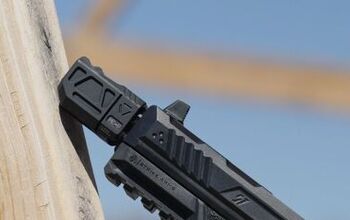
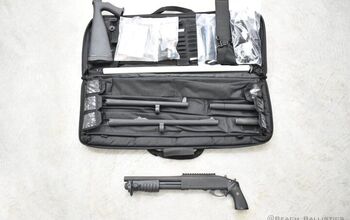


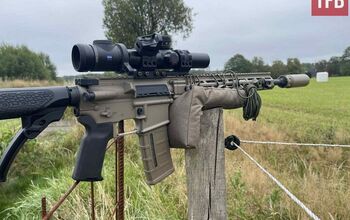





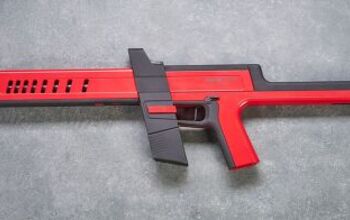
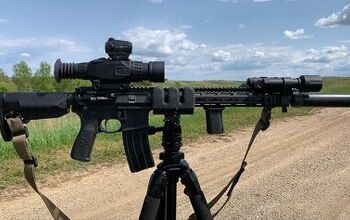
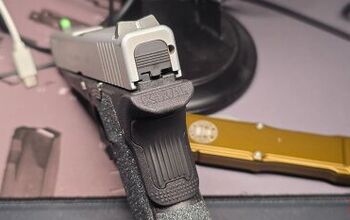
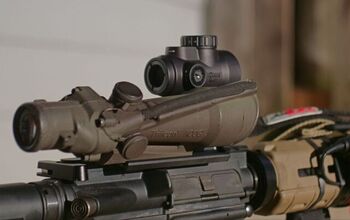
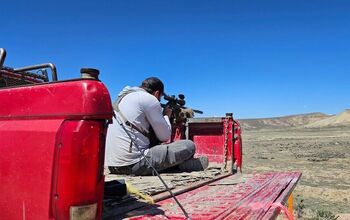

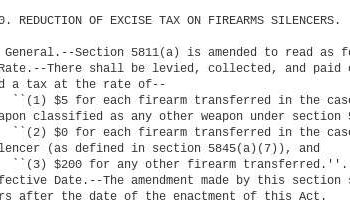
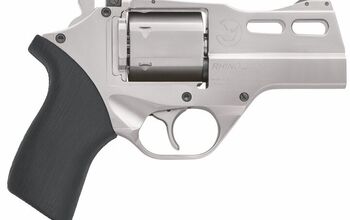
Comments
Join the conversation
"....I would get a copyright strike if I publish any of these clips with the sound on"
You already get several strikes for admitting you listen to Taylor Swift....
Not the right gear, not the right rounds, not enough rounds, not enough data - not enough preparation... Look, I usually don't comment, but I have to offer my conclusion on this "test": Clickbait, at best.